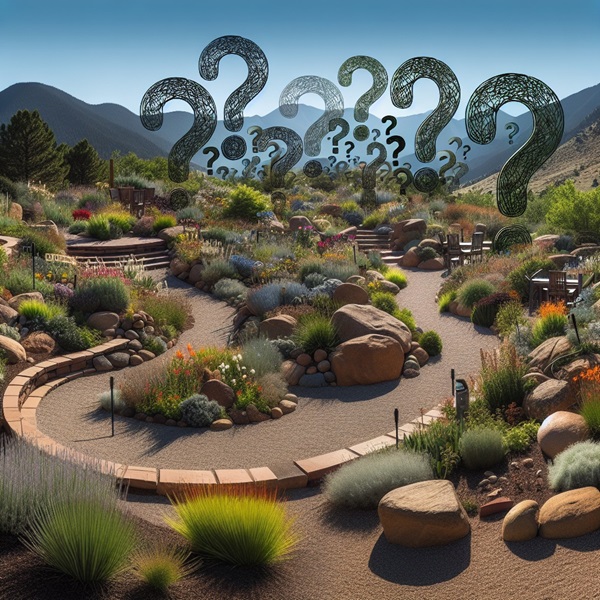
Key Takeaways
- California poppies are a cost-effective choice for
due to their low water and maintenance needs. - Choosing the right location for your poppies is crucial; they thrive in full sun and well-draining soil.
- Ground planting is best for natural spread, while pots offer control and are suitable for limited spaces.
- Preparing the soil correctly and understanding the watering needs of
poppies can ensure a vibrant display. - Starting from seeds is the most common and successful method to grow California poppies.
Why California Poppy Xeriscaping?
When you think of xeriscaping, imagine transforming your garden into a vibrant oasis that not only conserves water but also bursts with color. The California poppy, with its fiery orange blooms, is a cornerstone of such water-wise gardening. These resilient beauties are native to the west coast, and they’ve adapted to thrive with minimal fuss, making them an ideal choice for gardeners looking to create a sustainable, yet stunning landscape.
Understanding California Poppy’s Benefits
Most importantly, California poppies are drought-tolerant. Once established, they require little water, saving you time and reducing your environmental footprint. Besides that, they’re low-maintenance, resisting most pests and diseases, and they self-seed, filling your garden with color year after year with minimal effort. Because of these traits, they’re not only easy on the eyes but also easy on your wallet.
How Xeriscaping Saves Resources and Beautifies
Xeriscaping is more than just a gardening trend; it’s a smart, sustainable approach to landscaping. By choosing plants like the California poppy, you’re investing in a garden that will withstand dry conditions and look gorgeous doing it. Therefore, you’ll be contributing to water conservation efforts while enjoying a garden that’s both resilient and radiant.
Getting Started with California Poppies
Selecting the Perfect Site
Before you get your hands dirty, let’s talk location. California poppies bask in the sun, requiring at least six hours of direct light daily. Find a spot in your garden that’s a sun magnet, and you’re halfway there. They’re not picky about soil, but they do demand good drainage – think sandy or loamy grounds. If your garden has heavy clay soil, consider raised beds or containers to provide the drainage these poppies crave.
Choosing Between Ground or Pot Planting
Now, do you go with ground planting or pots? Here’s the scoop: ground planting lets your poppies spread their roots – and their seeds – leading to a natural, meadow-like appearance. On the flip side, pots offer more control, perfect for patios or balconies. Both have their perks, so weigh your space and style preferences before deciding.
Dive into Planting Techniques
Prepping Your Patch: Ground Planting Prep
First things first, let’s prep your patch. If you’re planting directly in the ground, loosen the soil and ensure it’s free of weeds. Remember, California poppies are champions of poor soil, so no need for fertilizers or enhancements. Simply rake the surface lightly after scattering the seeds to give them a cozy cover. They need light to germinate, so a heavy hand with soil or mulch can hinder their growth.
Container Cultivation: Tips for Pot Planting
For those going the pot route, choose containers with good drainage holes. Fill them with a well-draining potting mix, sprinkle the seeds on top, and gently press them into the soil. Keep the pots in a sunny spot, and you’ll be on your way to a poppy paradise. Water them sparingly; overwatering is the quickest way to spoil your poppy party.
California Poppy Care Simplified
Water Wisdom for Poppies
Watering California poppies is a delicate dance – too much, and they’ll wilt; too little, and they won’t flourish. The rule of thumb is to water them sparingly, only when the top inch of soil feels dry. Once established, they’re quite drought-tolerant, so they’ll only need a drink during prolonged dry spells. This water-wise approach is what makes them perfect for xeriscaping.
Tackling Pests and Disease
Luckily, California poppies aren’t a favorite snack for pests, and they’re generally disease-resistant. If you spot any chewed leaves or wilted flowers, it’s usually a sign of slugs or snails, which can be managed by hand-picking or using organic bait. As for diseases, proper spacing and site selection usually keep troubles at bay. Air circulation is key, so give your poppies room to breathe.
Cost-Benefit Analysis of Xeriscaping
Crunching Numbers: Initial Expenditure
Let’s talk costs. Xeriscaping with California poppies is incredibly budget-friendly. A packet of seeds, which can cover a large area, usually costs less than a cup of coffee. If you’re starting a xeriscape from scratch, you’ll need to factor in the cost of preparing your site. But since poppies aren’t demanding, you can skip the pricey soil amendments and irrigation systems. All in all, you’re looking at a low upfront investment for a high return in beauty and sustainability.
The Long Game: Upkeep Costs
Over time, the savings continue. Unlike thirsty turf or high-maintenance flowers, California poppies require minimal additional resources. No need for regular fertilizing, no hefty water bills, and no back-breaking maintenance. Plus, since they self-seed, you won’t be buying new plants each year. Your main cost may just be the occasional packet of seeds to introduce new colors or replenish your patch.
- Seed packet: $1-$5
- Site preparation (if starting from bare ground): Minimal
- Watering: Significantly reduced compared to traditional gardening
- Maintenance (weeding, pest control): Minimal
The Aesthetics of Arrangement
Designing with Poppies in Mind
A sea of orange not your style? California poppies come in a range of colors, from sunny yellow to serene white. Mix and match for a tapestry of hues, or plant in clusters for a bold statement. They pair wonderfully with other drought-tolerant plants like
Imagine a pathway lined with swaying poppies or a patio edged with pots of these cheerful blooms. The key is to have fun with your design – let the poppies’ carefree nature inspire a garden that’s uniquely yours.
Accenting with Sand and Stone
Xeriscaping often includes elements like sand and stone, and California poppies complement these textures beautifully. Consider using decorative gravel as mulch – it retains moisture, suppresses weeds, and adds a visual pop that makes the flowers stand out. Large stones can also provide contrast and help define spaces within your garden.
Harvesting and Propagation
Seeds of Success: Collecting and Storing
As the blooming season winds down, you might notice seed pods forming. Wait until they’re dry and brown, then snip them off and store the seeds in a cool, dry place. This way, you can sow them again next season or share them with fellow garden enthusiasts. Just a little effort can yield an abundance of seeds for future planting.
Spread the Beauty: Propagating Poppies
Propagation is as simple as scattering seeds where you want more poppies. They’re self-sufficient and will usually take care of the rest. If you want to get fancy, you can start seeds indoors in biodegradable pots a few weeks before the last frost. Then, transplant them outside, pot and all, to avoid disturbing the roots. This can give you a head start on the growing season.

FAQ
Can California Poppies Thrive in Shade?
California poppies are lovers of the sun, and they need a good amount of it to thrive – at least six hours of direct sunlight daily. While they might survive in partial shade, they won’t bloom as profusely or dazzle with the same vibrant colors. For those shady spots in your garden, consider other shade-tolerant xeriscape plants.
Choose plants like coral bells or ferns, which can add texture and color without needing full sun. This way, every corner of your garden can be lush and beautiful, tailored to the specific needs of the plants you choose.
How Often Should I Water My Poppies in Xeriscape?
Once your California poppies are established, they become quite drought-tolerant. In general, you should water them when the top inch of soil feels dry. This might mean watering once a week or less, depending on your local climate and weather conditions. Always check the soil moisture before watering to avoid overwatering.
During the rainy season, you may find that nature takes care of the watering for you. In fact, too much water can lead to root rot or fungal diseases, so it’s better to err on the side of underwatering with these hardy plants.
Remember, the beauty of xeriscaping is that it’s designed to reduce water usage, so your poppies will be right at home with infrequent watering.
Are California Poppies Involved in Companion Planting?
Indeed, California poppies play well with others and are an excellent choice for companion planting. They can be paired with other drought-resistant plants like
What Is the Lifespan of a California Poppy Plant?
In their native habitat and other areas with mild winters, California poppies can behave as perennials, coming back year after year. In regions with harsher winters, they are often grown as annuals. But don’t fret – they readily self-seed, ensuring that your garden is graced with their presence each spring. The key is to allow some of the last flowers to go to seed and scatter their progeny around the garden.
Do California Poppies Attract Wildlife?
Yes, California poppies are a magnet for pollinators. Their bright blooms attract a host of beneficial insects, including bees and butterflies, adding another layer of life to your garden. Birds are also known to visit, especially if you leave some seed pods on the plants for them to snack on. Creating a garden that welcomes wildlife is not only rewarding but also supports the local ecosystem.
And there you have it, a complete guide to adding a splash of resilient beauty to your garden with California poppies. From the practicalities of planting and care to the joys of watching your garden become a hub for local wildlife, these flowers are a fantastic choice for gardeners looking to embrace xeriscaping. So grab a packet of seeds and get ready to transform your outdoor space into a low-maintenance, high-impact paradise.



